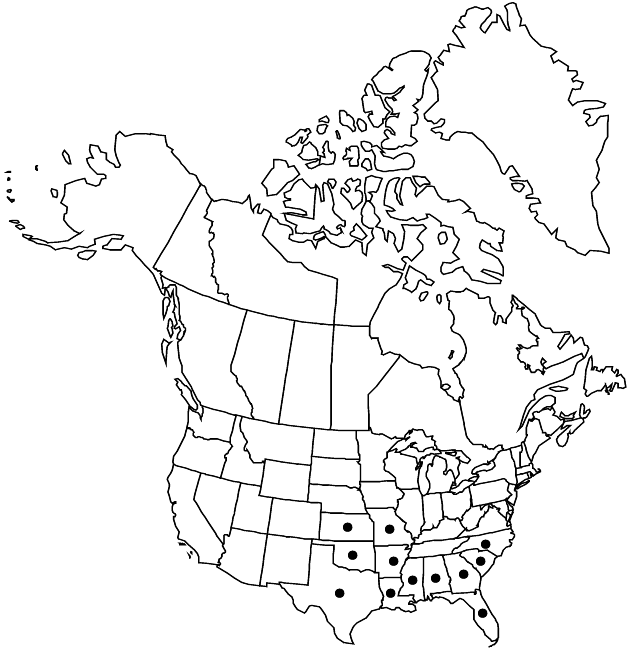Gaillardia aestivalis
Rhodora 58: 315. 1956.
Perennials (sometimes flowering first year) 10–60+ cm (sometimes rhizomatous). Leaves cauline; petiolar bases 0–3+ cm; blades narrowly elliptic, linear, obovate, or spatulate, 15–60 × 3–12(–22) mm, (bases of distal often clasping) margins remotely toothed or entire, faces usually closely scabrellous (hairs sometimes crisped). Peduncles 1–10(–20) cm. Phyllaries 15–26, lance-ovate to lanceolate, 6–14+ mm, scabrellous. Receptacular setae 0 or 0.1–0.5+ mm. Ray florets usually 6–12(–15), sometimes 0; corollas pinkish to purple or yellow to cream or white, 13–25 mm. Disc florets 20–60(–100+); corollas yellow or purple to purple-brown or bicolored, tubes 0.5–1 mm, throats stoutly cylindric to campanulate or urceolate, 3.5–5 mm, lobes attenuate-terete, 1.5–3 mm, jointed hairs to 0.3 mm. Cypselae 1.5–2 mm, hairs 1 mm, inserted at bases and on angles and faces; pappi of 8–10 lanceolate, aristate scales 5–7 mm (scarious bases 2–3.5 × 0.6–1 mm). 2n = 34, 68.
Phenology: Flowering Jun–Oct.
Habitat: Open places in grasslands, pinelands
Elevation: 10–1200 m
Distribution

Ala., Ark., Fla., Ga., Kans., La., Miss., Mo., N.C., Okla., S.C., Tex.
Discussion
Plants with both ray and disc corollas wholly or mostly yellow to cream or white have been treated as a distinct species (Gaillardia lutea) or as varieties [G. aestivalis var. chrysantha (Small) Cronquist and G. aestivalis var. winkleri (Cory) B. L. Turner]. B. L. Turner (1979) formally recognized three varieties of G. aestivalis in the broad sense: var. aestivalis with purple discs, var. chrysantha with yellow discs, and var. winkleri with white discs. Although plants with yellow or white corollas may occur as local populations and may be distinguished by different ploidy levels, failing one or more additional distinguishing morphologic traits, they do not, in my opinion, merit formal taxonomic recognition.
Selected References
None.